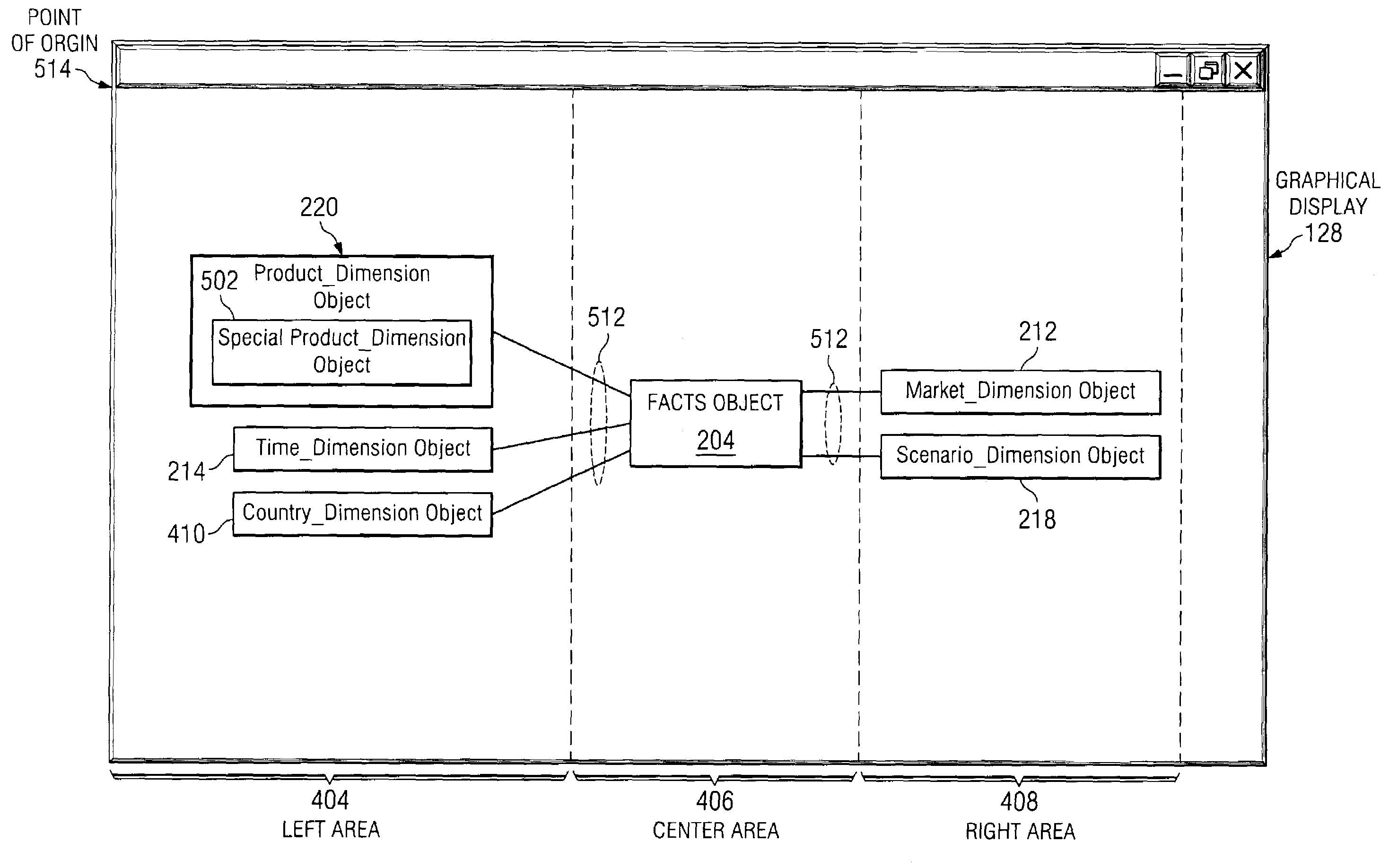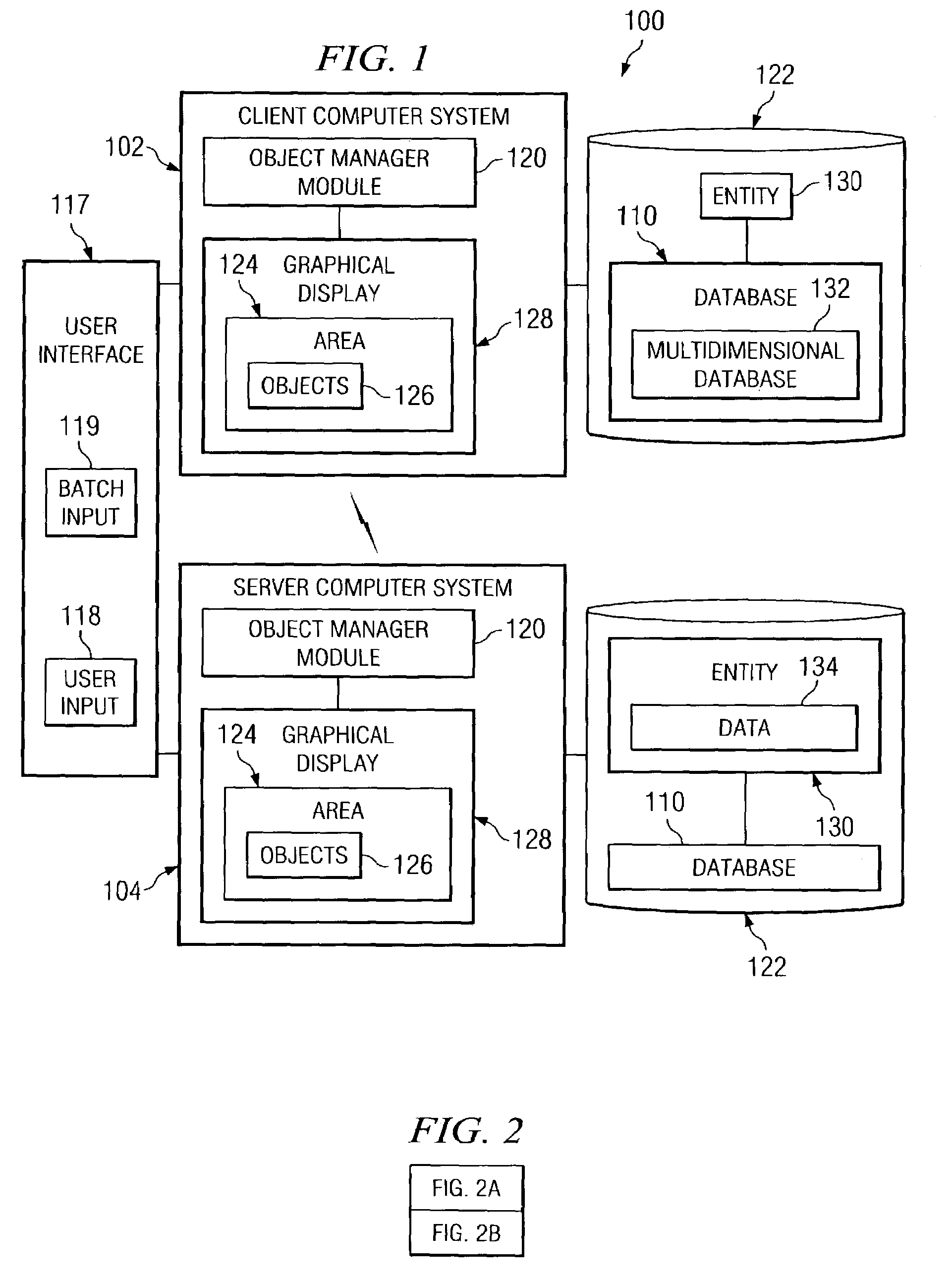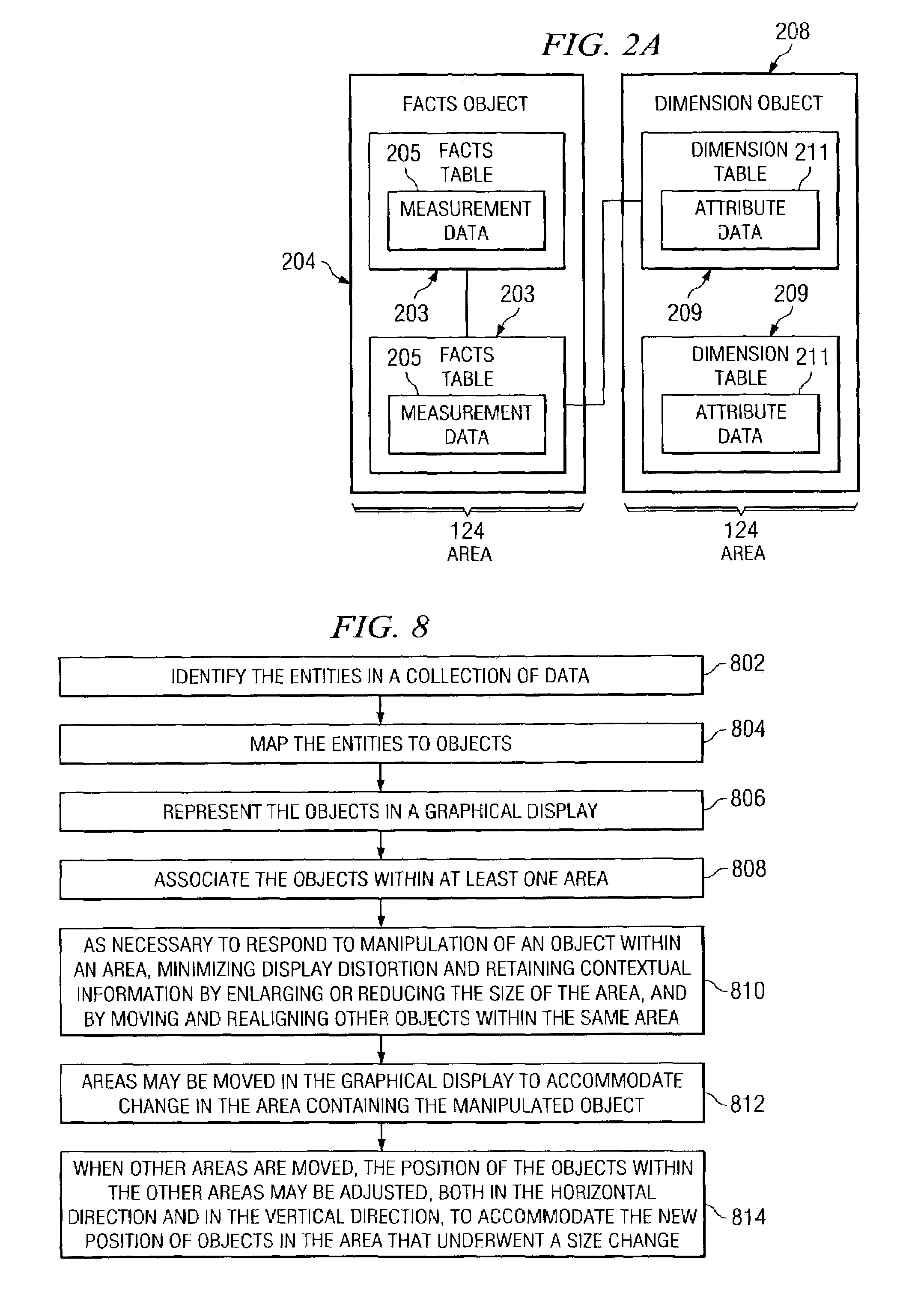Modifying the graphical display of data entities and relational database structures
a technology of relational database and graphical display, which is applied in the field of database information graphical display, can solve the problems that the graphical display of a typically large number of objects has not been sufficiently improved, and achieves the effects of minimizing display distortion, optimizing the representation of connecting lines, and improving the graphical display of a large number of objects
- Summary
- Abstract
- Description
- Claims
- Application Information
AI Technical Summary
Benefits of technology
Problems solved by technology
Method used
Image
Examples
Embodiment Construction
[0033]As shown in the drawings and for purposes of illustration, an embodiment of the invention efficiently presents typically large amounts of entity information with a graphical display that retains all or most of the relevant contextual information and minimizes distortion of the graphical display. Existing systems have not been able to sufficiently improve the graphical display of a typically large number of objects that represent data entities. The objects may be used with data analysis techniques such as data mining of relational database information, multidimensional data, and OLAP data. The present invention may be implemented with a graphical display having at least one area that includes objects. The present invention enables users to analyze large amounts of data represented as objects in the graphical display by partitioning the graphical presentation into areas and by allowing manipulation of objects within each area as a unit. That is, the objects are manipulated indep...
PUM
 Login to View More
Login to View More Abstract
Description
Claims
Application Information
 Login to View More
Login to View More - R&D
- Intellectual Property
- Life Sciences
- Materials
- Tech Scout
- Unparalleled Data Quality
- Higher Quality Content
- 60% Fewer Hallucinations
Browse by: Latest US Patents, China's latest patents, Technical Efficacy Thesaurus, Application Domain, Technology Topic, Popular Technical Reports.
© 2025 PatSnap. All rights reserved.Legal|Privacy policy|Modern Slavery Act Transparency Statement|Sitemap|About US| Contact US: help@patsnap.com



